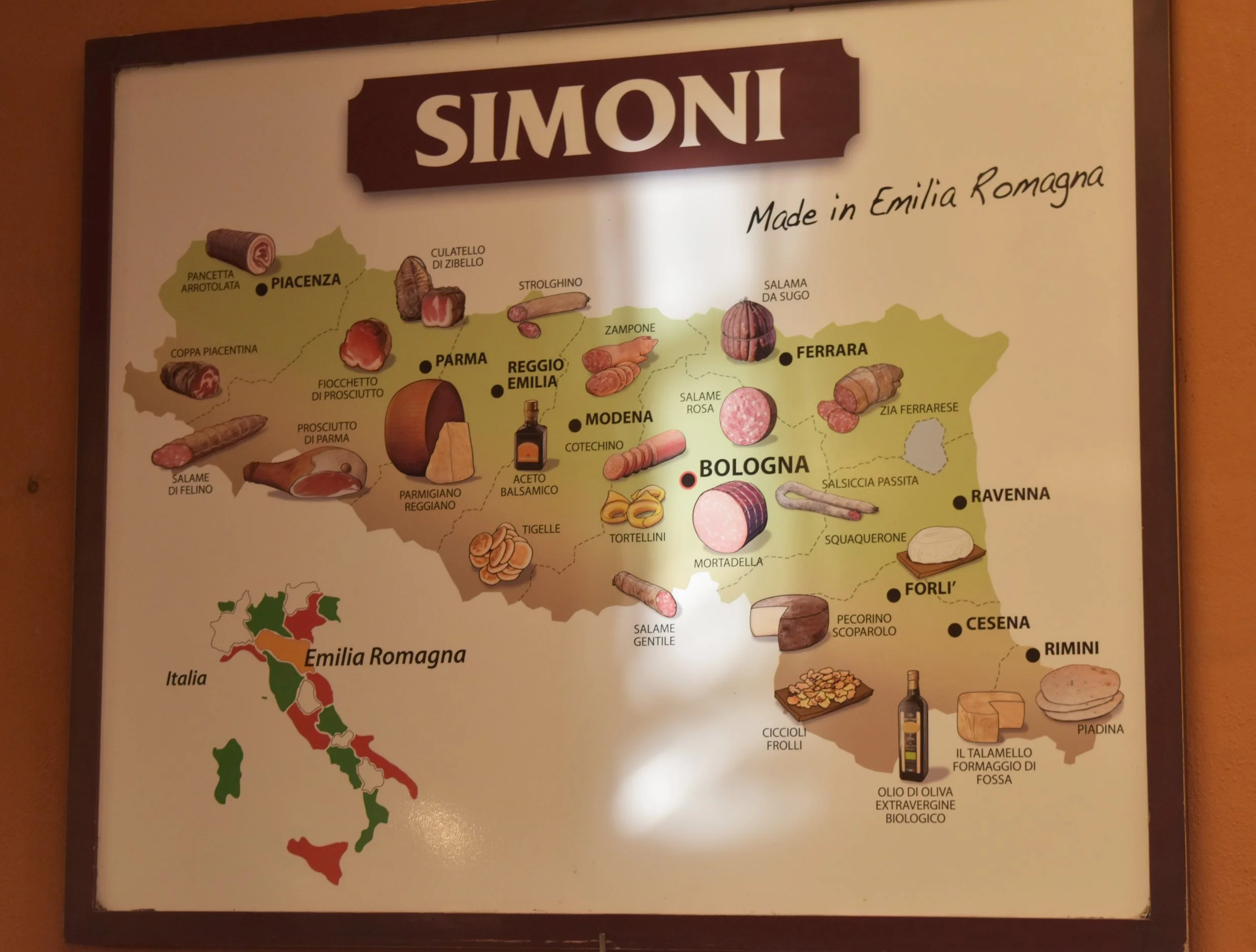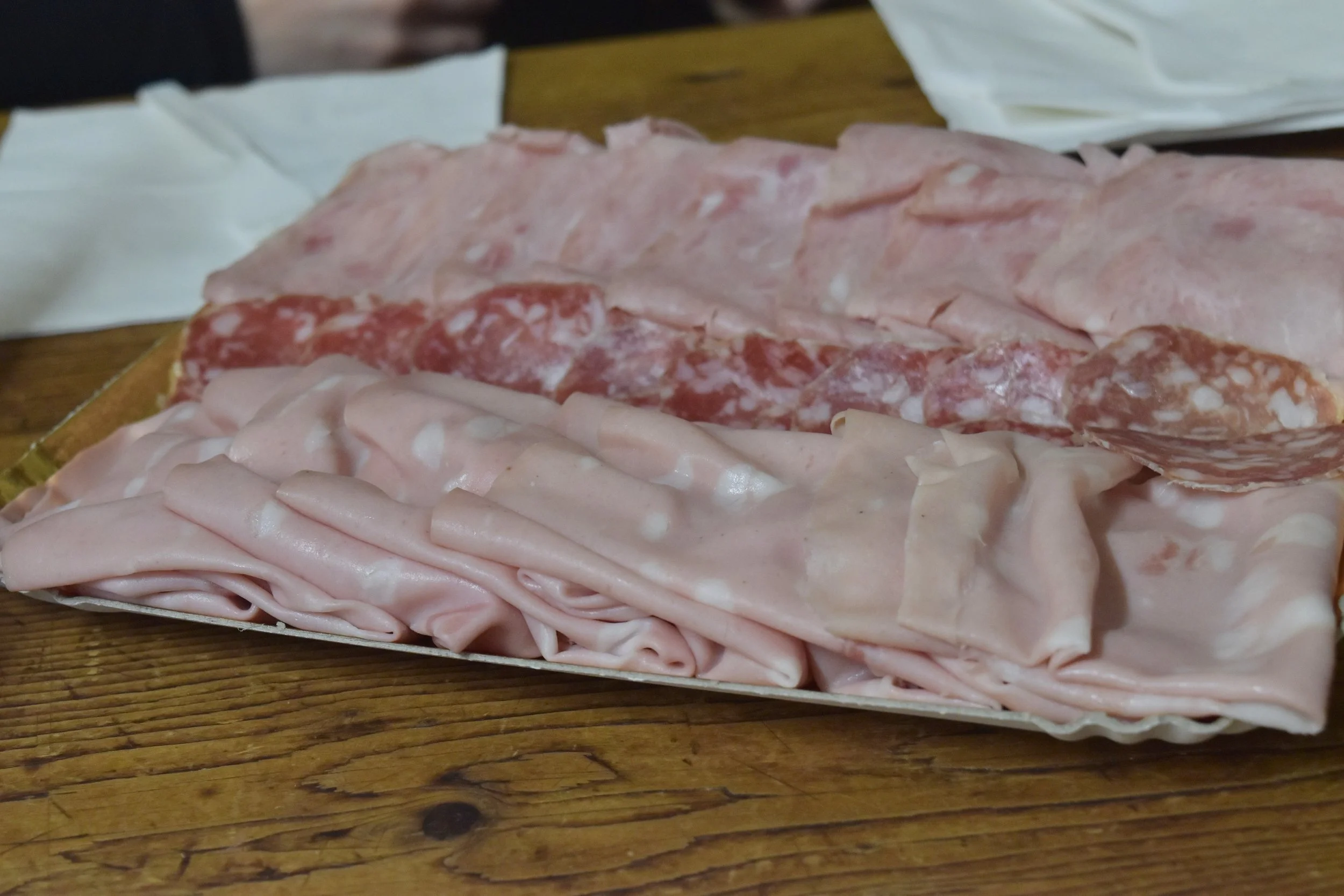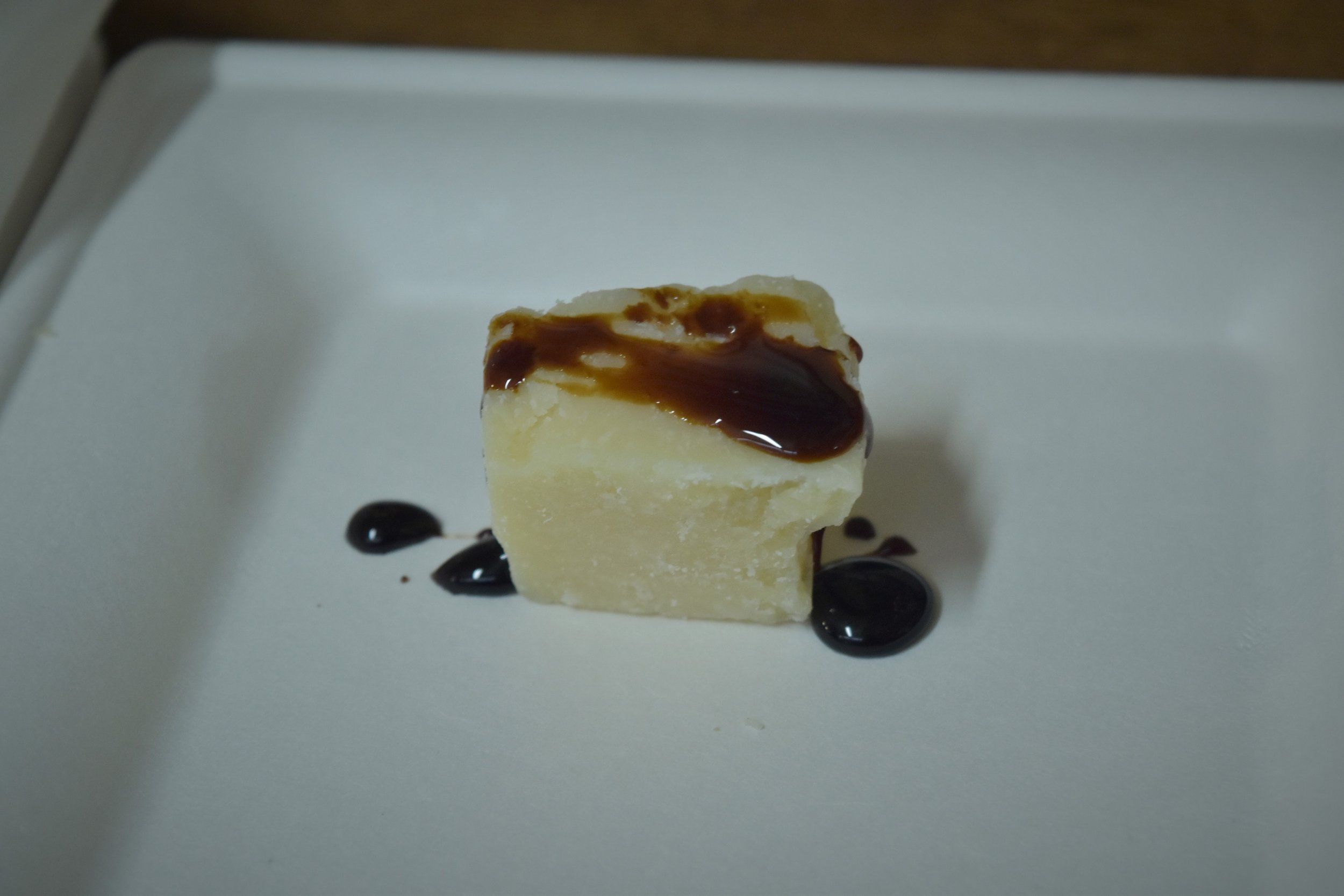
Emilia-Romagna
Food Valley
Emilia-Romagna is a destination for food lovers.
The area is full of diverse microclimates that enable agriculture and farming to thrive, producing some of the finest quality ingredients in the world, with many having designations of IGP and DOC. These designations require the products to adhere to local expertise, tradition, and process.
Authentic Italian Food
Emilia-Romagna has 44 food products designated as IGP or DOP, the most in any region of the world. These designations certify that food products adhere to guidelines in how and where the products can be made.
IGP - Indicazione Geografica Protetta
English translation: Protected geographical indication. This designates that the product is linked to a specific geographical area. The label guarantees that at least one phase of production or one primary ingredient originates in a specific area. IGP is a good indicator of authenticity, but it does allow for products and processing to be done outside of the designated area.
DOP - Denominazione Origine Protetta
English translation: Protected designation of origin. This ensures the highest quality according to Italian tradition. The label guarantees that the product has been grown, produced, and packaged locally. DOP products are the most authentic tastes of Italy.
Prosciutto di Parma
Prosciutto di Parma is a cured ham known for its delicate and sweet flavor. It is made in the hills around Parma where the mountain air is dry, sweet, and aromatic. Prosciutto di Parma has no additives and is 100% natural. The only ingredients are salt, air, and time. The pigs are a specific heritage breed that are fed leftover whey from making parmesan cheese. This gives the ham a nutty flavor. Prosciutto is made from the hind leg of the pig. The ham is salted and cured for up to 3 years, then hung to dry in large windows, where the mountain air adds to the flavor. The meat is pierced with a needle and sniffed to ensure the quality before it is stamped as Prosciutto di Parma.
The finished ham is best served thinly sliced. It has a sweet and nutty flavor with a thin layer of fat on the exterior that contributes a rich buttery mouthfeel to the ham. Prosciutto di Parma pairs nicely with hard aged cheeses, wine, and fruit.
Cullatelo
Culatello is a cured ham with DOP made in Parma. The ham is not widely exported so is often hard to find outside of Italy. The processing can only take place in a specific area and exclusively in the period between October and February when the region is enveloped in fog and cold. The ham is trimmed, salted, and then stuffed into the pig's bladder, and tied with string. The hams are aged in a cellar through the winter and summer to be served the following winter. During the curing process mold grows over the exterior and adds complexity to the sweet delicate ham. In 2017 the FDA approved imports of culatello, so it can now be found in the US in specialty Italian shops and online. It should be thinly sliced when served and goes well with fine aged cheese and wine.
Mortadella
Mortadella IGP is made from ground pork and fat. It originated in the 1600’s and the name comes from the mortar that was used to grind the pork. Today mortadella is ground by machine into a paste with fat and sometimes black peppercorn added. The meat is stuffed into cow’s bladder then tied, hung, and slow cooked to 160 degrees F. Mortadella should be thinly sliced when served and has a delicate and soft flavor with a hint of spice. Traditional mortadella can have black pepper. Sometimes pistachio is added to enhance flavor due to a lack of fat and can indicate a lower quality mortadella. In the early 20th century US, Italian and German Immigrants made a lower cost version of mortadella that became known as “bologna.”
Balsamic Vinegar of Modena
True balsamic vinegar has a black, syrupy, sweet, and complex flavor. There are three types produced in the Emilia-Romagna region: IGP Balsamic Vinegar of Modena, Traditional DOP Balsamic Vinegar of Modena and Traditional DOP Balsamic Vinegar of Reggio Emilia.
IGP Balsamic Vinegar of Modena must be produced in Modena or Reggio Emilia and made with specific grapes including the Lambruscco and Trebbiano varieties from local wine making. The combination of vinegar, must, and caramel is aged for a minimum 2 months and minimum 3 years if it has the designation “aged.”
Both DOP Balsamic Vinegar of Modena and Reggio-Emilia follow similar processes and differ mainly by the region in which they are made. The must of approved grapes grown locally is the only ingredient and cooked at a low temp to begin fermentation of sugar and acetic acid. Vinegar is fermented in wooden barrels for a minimum of 12 years. The sugars and amino acids react with each other to produce new flavor and aroma compounds that enhance the flavor over time.
DOP Balsamic is stored in traditional patented shaped bottles. Vinegar of Modena is stored in a bottle designed by a famous Italian designer Giorgetto Giugiaro. DOP balsamic is a higher quality vinegar but also has a higher price. It is best served uncooked as a condiment drizzled sparingly on fine cheese, pasta, meat, fruit, or gelato.
IGP Balsamic Vinegar has a lower price and is often used on salads, marinades, and as an ingredient on dressings or sauces.
Parmigiana-Reggiano
Parmigiana Reggiano is made from the evening milk of cows in the provinces of Parma and Reggio and aged for 12 months. Whey is added to the milk and the mixture is heated. Calf rennet is then added and the milk is curdled for 12-15 minutes. The curd is broken into small grains and then cooked. The cheese is wrapped in a linen cloth and put into wooden or metal molds, where the cheese obtains its characteristic shape. The wheels ripen on wooden shelves in a temperature and humidity-controlled environment from 12 months to two years. The Consorzio Parmigiano Reggiano inspects every wheel. The cheese is tested by a master grader who taps each wheel to identify undesirable cracks and voids within the wheel. Wheels that pass the test are then branded on the rind with the Consorzio's logo.
Referred to as “The King of Cheese,” it has a complex and nutty flavor with a high concentration of glutamate which gives parmesan an umami taste. The cheese contains crystals of tyrosine and calcium lactate which activate the savory taste buds and enhance the flavor. Parmigiana Reggiano is best served in small chunks with cured meats and other cheese or grated over salads and pastas. The rinds can be saved and used to make broth or to flavor soups or stews.
Parmesan cheese in the US is not regulated as it is in Italy and generally refers to grated cheese, but here is wide variation in the quality.
Pasta in Bologna
Bologna is the capital of the Emilia-Romagna region.
Home to the University of Bologna, the city has a diverse community and is rich in culinary tradition. Known for its handmade pasta all’ouvo (pasta with eggs), the dough is traditionally prepared by women known as, le sfogline.
Made with 00 flour and eggs, it is rolled out by hand using a long rolling pin called a materello. Stretching the dough by hand allows the pasta to retain air and texture. The tradition of le sfoline is still present today, and many of the region’s best known dishes are made with hand-stretched pasta all’ouvo.
Tortellini
Bologna’s best-known dish is tortellini which is a hand shaped ravioli stuffed with a mixture of pork loin, prosciutto, mortadella, parmigiana-reggiano, eggs, and nutmeg. The recipe was registered with the Bologna Chamber of Commerce by the Italian Culinary Academy in 1974 and can be seen on display in a museum in the city. One of the most popular stories of the origin of tortellini tells of an innkeeper who had Venus as a guest. He happened to see her naked beauty and was inspired to make a ravioli shaped like her naval. Tortellini is typically served “in brodo” which translates to “in broth.” The broth is made using meat bones and vegetables. A well-made broth adds a silky savory mouth feel that is clean and allows the flavor of the ravioli and filling to shine.
Tagliatelle Bolognese
In Bologna this dish is simply called “Tagliatelle Ragu.” The sauce is made using carrots, onion, and celery sauteed in olive oil (soffritto). Beef, pork, and pancetta are browned and then the pan is deglazed with wine. Tomatoes are added and the sauce is slow simmered for 2-3 hours and finished with milk to add a touch of creaminess. Tagliatelle is made by rolling egg pasta dough into a thin sheet and cutting it into thin ribbons. The name tagliatelle comes from the word “tagliate” (to cut).
Lasagne Verdi
The recipe for lasagne in Bologna is made using pasta verdi which is pasta dough with pureed spinach added. The pasta is layered with two sauces: ragu, and “besciamella” which is an Italian version of the French bechamel sauce- a cream sauce thickened with roux.









